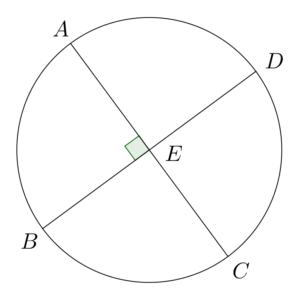Ans: B


Since $AC$ and $BD$ are diameters of the circle, then the intersection point $E$ must be the centre of the circle. Therefore, $AE$, $EC$, $BE$ and $ED$ are radii of the circle and $AE= EC=BE=ED=12\text{ cm}$. Hence, the area of $\Delta AEB$
$\begin{array}{cl}
= & \dfrac{1}{2} \times AE \times BE \\
= & \dfrac{1}{2} \times 12 \times 12 \\
= & 72 \text{ cm}^2
\end{array}$

